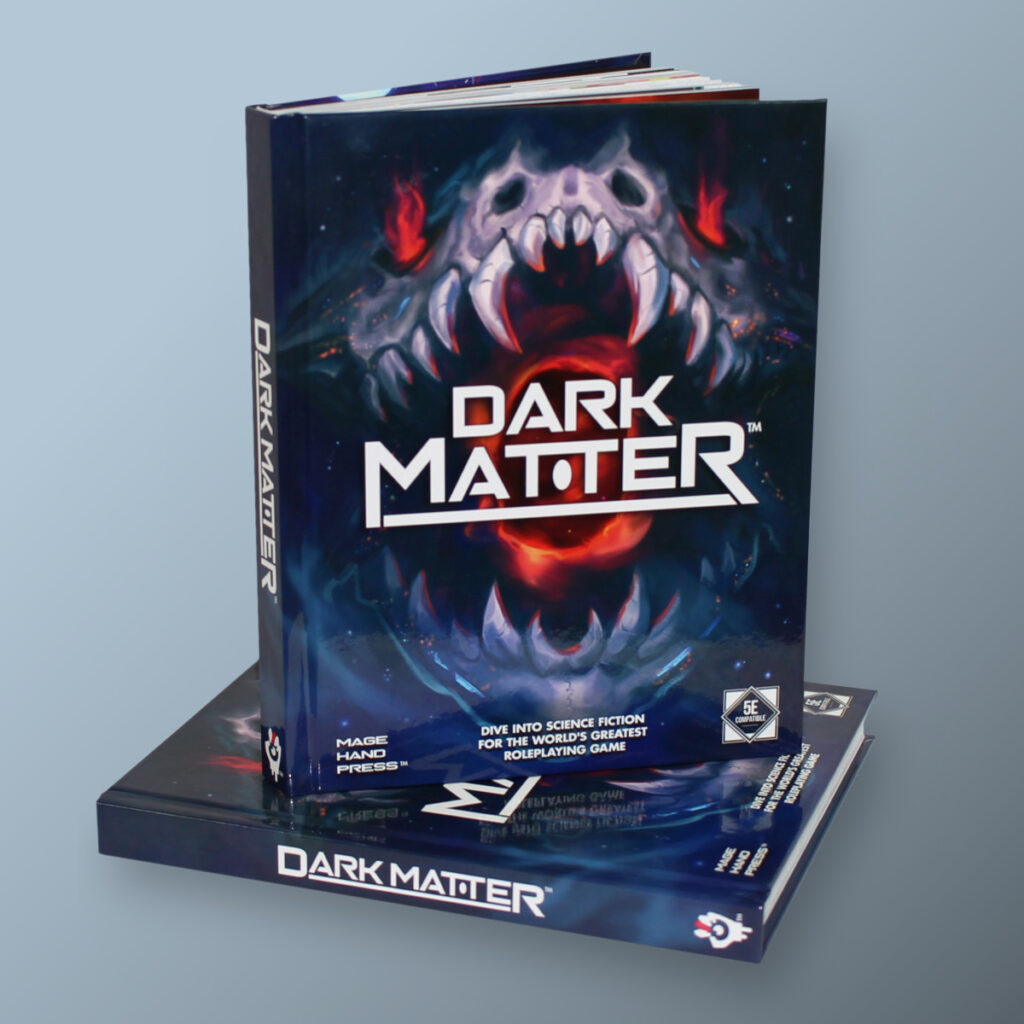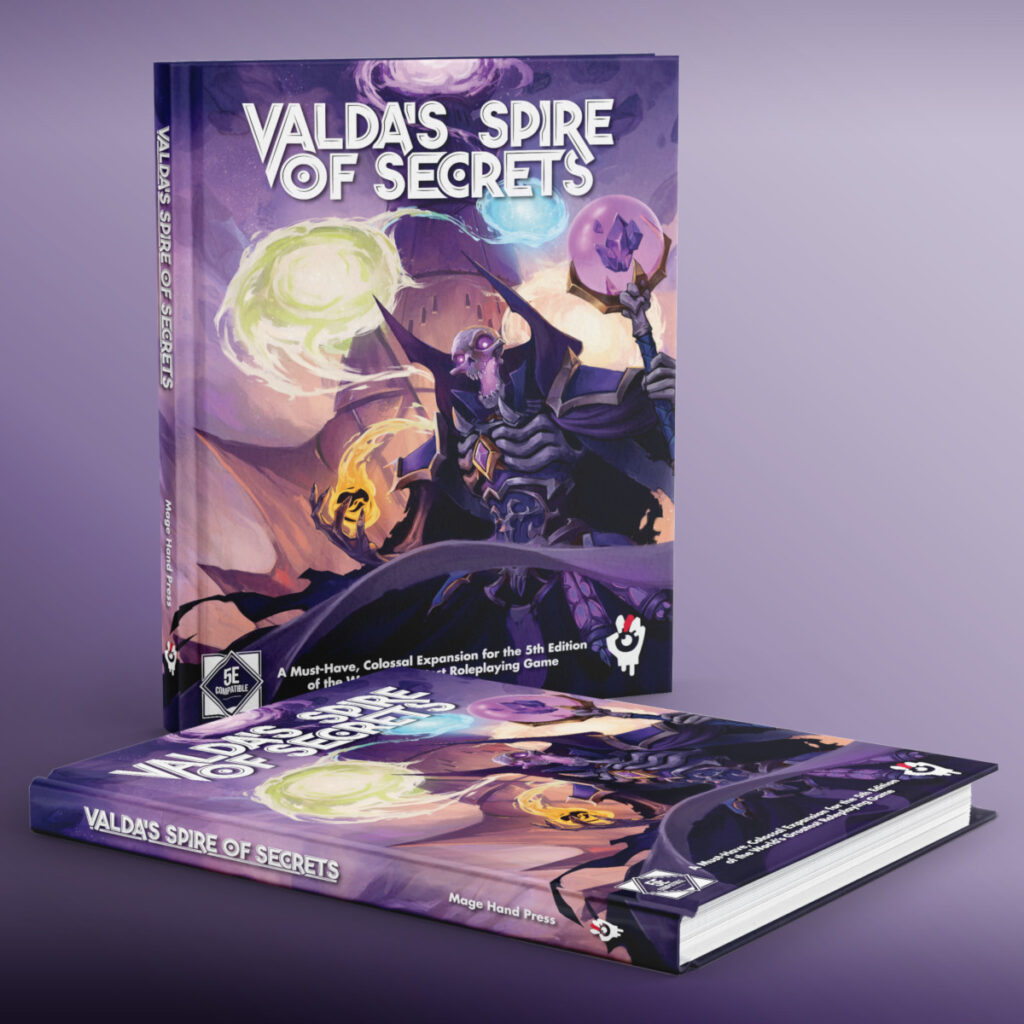Comment from the Finger: This post comes to you from the Knuckle!
Optimization: seeking to build the best character you possibly can so you don’t feel totally useless in battle. A lot of players do it – I myself do it – and you know what? After two years of playing 5e, it’s really boring. Now, I’m not saying you should make characters who are purposely bad at what they’re supposed to be doing (looking at you, dumb wizards and weak barbarians,) but character diversity tends to suffer when the more optimized builds start looking the same.
There’s a quick and easy fix to this: character customization. Different classes have different ways to do this, and I’ll go over several of these methods here, because I firmly believe that a character should not suffer mechanically just because a player doesn’t want to play Great Weapon Fighter #49, or Twin/Quicken Fire Dragon Sorcerer #4,578. Now, that’s not to say that you can’t make an interesting character using those character builds – I’ve seen it done, and done well – it’s just that mechanically, they’re often the exact same. There’s the also the opposite side of the problem: when 5e doesn’t have mechanics that support your character concept.
Concrete Characters
From time to time (read: quite frequently) my players come to me with a character concept which isn’t supported within the core rules of the game. Sometimes, it’s an unarmored fighter (not a barbarian, nor a monk) without multiclassing. Sometimes, the warlock class doesn’t offer just the right invocation to really set them apart from other warlocks, or reinforce the theme of their chosen Patron. Maybe they want their cleric to be able to do more than cast sacred flame when they’ve run out of spell slots.
I’ll usually point them to either WotC’s Unearthed Arcana, or to this blog, if there’s something that matches their character concept. In the rare instance where it’s not covered by either source, I’ll more often than not sit down with the player, and work something out. If it’s something as simple as an unarmored fighter, I have no issue with saying: “Okay, you can have Unarmored Defense equal to 10 + your Dexterity modifier + your Constitution modifier, BUT you lose all of your armor and shield proficiencies.” That’s fairly quick and easy – and it doesn’t change the power levels of the class, since without magic items a Fighter will never reach above a 20 AC (21 with the Defensive Fighting Style).
Other times, like last night, are more involved. “Hey, Knuckle! I want to be a Warlock who’s gone and made a pact with a thunderbird, and play it like a Native American shaman.” That request is a little more involved, since none of the published warlocks have anything to do with Elemental Air. Now, I could send them to the Storm Sorcerer from the Sword Coast Adventurer’s Guide and say “Play that,” but the player wanted to be a warlock specifically (their sorcerer was just killed in the previous session). So before our next play session, I’m going to sit down and write up a Thunderbird patron (which I might upload to MFoV at some point if it ends up working in actual play and people are interested in seeing one.)
Varieties of Customization
When a player comes to me asking for something unique, I always look at these things:
- Can it be re-fluffed from something that the class already has?
- Can the concept be achieved through multiclassing?
- Would a feat or two help an existing class/archetype fulfill the concept?
If all else fails, I ask if a custom archetype can fulfill the concept or (and this is by far my least favorite option) if a level 1-20 base class necessary to fulfill the player’s character concept?
Thankfully custom base classes are rare. The most common solutions I’ve found are multiclassing and custom archertpes. Refluffing existing material is useful from time to time (for example, I’ve theory-crafted a Vampire PC using the Fiend Patron warlock and careful Invocation selection to pull it off.)
I actually have a pretty hard time designing feats. It’s always a question of: “how do I make this useful throughout their career, without making it overpowered at 4th – or even 1st – level?” Another thing that gives me problems when designing a feat is that they’re supposed to be theoretically all worth +2 to a stat, but they have vastly different power levels in practice. Magic Initiate and Great Weapon Master are not equally powerful, in my opinion, since Great Weapon Master will be useful far more often than Magic Initiate’s 1/day spell (cantrips notwithstanding.) And we all know that Lucky is just about one of the most powerful abilities in the game, which is also perplexingly available to variant humans at 1st level.
Archetypes are generally much easier, it’s pretty simple to go in and ask: “Okay, how does this stack up against the features that other subclasses (within the same class) get at similar levels?” My favorite class to do this for is the warlock, and I can just about write one in my sleep (seriously, ask the Finger, and he’ll tell you that I’m constantly saving Otherworldly Patrons to the blog and asking for feedback). With an archetype, I’ll usually ask: “Does this fit within the class identity and story – and if not, how do I fix it?” The process of making a balanced archetype can be anywhere from an afternoon (when I’m writing up a new warlock), to several weeks (the Palm and I have a collaboration coming up for you guys soon, that I think you’ll like!). It usually involves a lot of number crunching and a couple sessions of playtesting to get it just right.
Refluffing is by far the easiest option in practice. A player came to me and said: “I want to play a templar.” And I asked them: “Okay, what does that mean? What is a templar to you, thematically?” After thinking for a second they said: “Templars are acolytes of a temple, who are trained specifically to guard the holy places, and when called upon fight in the crusades and holy wars of their deity.” Hearing their response, I returned: “That sounds like a Paladin, probably the Oath of Devotion.” My player grimaced and responded that a Paladin wasn’t quite what they were going for – wanting to be more martial than a half-caster. There was also the issue of Divine Smite not really making sense for the character’s fighting style, which relied on getting more attacks in, rather than hitting hard with a couple of attacks. So I asked them: “Well, why not play an Eldritch Knight? Hear me out: swap the Intelligence spellcasting for Wisdom spellcasting, use the Cleric spell list, rename a couple of the abilities…is that the Templar you envision yourself playing?” After poring over the Eldritch Knight, the looked at me, and went: “Yeah, this is exactly what I wanted.”
And then there are classes with a bunch of moving parts: spells for spellcasters in general, Eldritch Invocations and Pact Boons for the warlock, meta magics for the sorcerer, etc. These are really easy to write up and can add a lot of depth and/or flavor (preferably both) to the mechanics of the character they’re used on.
One additional thing I do to give my players more leeway with their character concepts: for most races that give +2 to one stat, and +1 to another stat, I allow the players to put those two stats wherever they wish. Most of my players leave their racial stat increases right where they are, but when they want to play a dragonborn rogue, or a goliath druid, they swap their stat increases for more optimal ones. It’s for every game, but it’s worked well in mine, and has lead to some race/class combos I probably wouldn’t have seen my players pick otherwise.
A Few Examples
When writing up any new content, I look at “what is missing/what am I trying to add?” I then look at existing options and try to keep things in line with the material published by WotC (whether in an official book, or Unearthed Arcana, as you’ll see below.)
Battle Maneuver: What cool tricks can your fighter perform? I dunno about you, but the most commonly chosen fighter in my group by a landslide is the Battle Master. That said, players are always asking for new maneuvers, because Trip/Sweeping Attack get pretty repetitive.
Called Shot
When you make a weapon attack against a creature that you can see, you can call your shot. When you call a shot, you’re specifically focusing on trying to hit a particular part of that creature, and you lose your proficiency bonus on this attack roll. If you successfully hit the creature, the hit becomes a critical hit, and you add one superiority die to your damage roll.
This maneuver is a bit of a gamble. Yes, it can have incredible payoff, but it’s anywhere from a -2 to a -6 on your attack roll, and so it’s not useful in every situation. It’s also not completely broken if you use it in tandem with Great Weapon Master/Sharpshooter, because at 3rd level you’re looking at a -7 to hit. My players enjoyed this one, and we didn’t find it to be a problematic addition to the game.
Metamagic: Only a few players have asked me to write new metamagic options for them, but that’s probably because only a few of my players even look at the sorcerer to begin with. I have gotten a few requests, though, and the following is one that I’ve used in a couple of my games.
Storm of Energy
When you cast a spell that requires an attack roll, you can cause the energy of the spell to surge around you, harming hostile creatures within 5 feet of you. To do so, you must spend 3 sorcery points, and each creature within 5 feet of you must make a Dexterity saving throw or take damage equal to the amount you rolled on your spell attack. They take half as much damage on a successful save. This damage is the same type as the damage of your spell.
This gives sorcerers a cool AoE/control effect while not taking away from their other options. This would lend itself well to a melee build, and acts as a reason for enemies to not get too terribly close. The variable damage and amount of possible damage is the reason I priced Storm of Energy so high (for Meta Magic, anyway). In play, this hasn’t caused any problems. My player had fun with it, but said if it didn’t gel with her character concept, she wouldn’t immediately take it over any of the other metamagic option. That’s what new character options should do, they should add to a character concept without overwhelming the existing options.
Eldritch Invocation: I’ll include a couple of example here, just because there’s so much variety in what an Eldritch Invocation can do, and because I just love warlocks.
Dragon Storm
Prerequisite: Elder Wyrm Otherworldly Patron, Pact of the Blade feature
When you create your weapon as a longsword it appears as a weapon made of finely honed tooth and claw, you can use your Dexterity instead of Strength for your attack and damage rolls with your pact weapon. When you hit a creature with your pact weapon, you can expend a warlock spell slot to deal 2d8 damage per spell level. This damage is acid, cold, fire, lightning, or poison, chosen when you expend the spell slot.
(The Elder Wyrm patron is available in the new Draconis Fundamantum book on our patreon)
This is an example of refluffing something to fit my needs. In a recent UA article, WotC made it clear that they believe that warlocks who forged a Pact of the Blade should have the ability to smite like a paladin. The “Smite” Invocations that they released got some form of rider effect on top of their damage. These riders include things like “reduce your enemies’ speed to 0,” “knock your target prone if it’s Huge or smaller,” etc. For this one I determined that a decent replacement for the rider effect would be to couple damage choice with the ability to use Dexterity to hit and damage (Hey, Kobolds should be able to be perfectly viable dragon warlocks!).
Lord of Lore
Prerequisite: Pact of the Tome, 5th level
You gain proficiency in two skills of your choice from Arcana, History, Religion, and Nature. Skills you gain through this Eldritch Invocation add double your proficiency bonus to skill checks.
This Eldritch Invocation allows the Pact of the Tome fill a niche that I’ve always felt they should thematically: the profane researcher. Someone who’s actively delving into the lore of the Feywild, Abyss/Hells, or Far Realm. It gives them two knowledge skills to represent the time that they’ve spent pouring through libraries or their Book of Shadows. Giving double proficiency bonus to such checks also shores up a weakness (Intelligence) that most warlocks seem to have in common. This Eldritch Invocation shows a different side of what the Invocations are supposed to do: they help flesh out your contribution to the 3 pillars of 5e’s game play: Combat, Environmental Exploration, and Social Interaction. This one could be useful in either the Expliration or Social pillar, depending on how and when you use it, whereas Dragon Storm is explicitly for the Combat pillar.
Feats: As I said earlier, I hate designing feats. Of course, I have written one up which is present in all of my games. I think about this as a Magic Initiate for martial classes, except…not? If that makes any sense.
Trained Warrior
You have received basics training in the art of martial combat. Your training has honed your body, and instilled in you a particular style of fighting. You gain the following benefits:
-
- Your Strength or Dexterity increases by 1.
-
- You gain one fighting style of your choice from the Fighting Style class feature.
This feat has been a boon to paladins who want to engage in Two-Weapon Fighting, rangers who want to use a Great Weapon, or rogues and barbarians who don’t get a fighting style natively. This feat has proven great, because it’s not a necessity (OMG, I’m going to die if I can’t take this!), but it does support some builds that could use the extra help, and it’s also nice if you have an odd stat and need to bump it.
Spell: I have a love/hate relationship with writing spells. I have so many cool ideas for magic, but they’re usually higher level, so I might never get to use them. How I get around this is by writing flavorful cantrips that I can use across my character’s career (or give to my party, if I’m the DM) to avoid the worry that it’ll never get used.
Phoenix Fire
Evocation cantrip
Casting Time: 1 action
Range: 120 feet
Components: V, S, M (a feather painted with flame designs)
Duration: Instantaneous
You tap into the energies of the Elemental Plane of fire and summon forth a bolt of energy that takes the form of a spectral phoenix. Make a ranged spell attack roll against one creature that you can see. On a hit the creature takes 1d4 fire damage and 1d4 radiant damage.
This spell creates more than one bolt when you reach higher levels: two bolts at 5th level, three bolts at 11th level, and four bolts at 17th level. You can direct these bolts at the same targets or different ones. Make a separate attack roll for each bolt.
This is another refluffing. I took eldritch blast and modified it for a Phoenix Sorcerer character. Following the DMG guidelines I thought it would be cool to split the 1d10 force damage into 2d4 fire damage. Then I noticed that most cantrips have a rider, and I thought: “Oh, wouldn’t it be cool if the rider for this one was having two separate damage types?” And so after discussion with the Finger, and a bit of playtesting this spell entered my games, and it’s been a blast ever since!
Conclusion
As a GM you should never say no to your players! (Except when they’re actively trying to destroy your game world. Then you should use your ban-hammer judiciously!) Everyone plays D&D differently, but for the most part when a player asks if they can use a new option, or asks for a solution to help flesh out their character concept, they’re not trying to screw with you. It’s often lots of fun, and helps flesh out the world when you work with your player to create new options for their character.
In the case of phoenix fire, how does their ancestry allow them to draw energy from the Elemental Plane of Fire at will? With Trained Warrior, did they learn their fighting style from a fellow party member? Or in the case of a variant human, who taught them how to fight? Are they still in contact with that person? Why or why not? Though some of these options will be strictly combat focused like Dragon Storm, even those can help inform the story: do your enemies eventually come to recognize this terrifying longsword that channels the power of ancient dragons? Why don’t you wear armor? Are you an ex-paladin trainee who cast aside their former life and took up a life of poverty – relying on nothing but their blade and the bare essentials?
D&D is a game of collective storytelling! Let your players help tell the story through their character builds! Have fun, and happy gaming!



